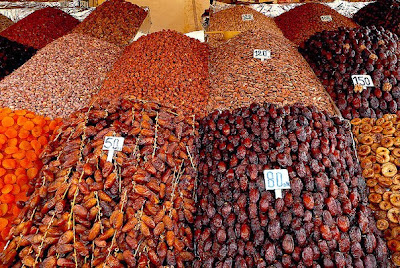A Culture of Eating, Drinking, and Being Hospitable
HISTORY AND INFLUENCES :Moroccan cuisine is considered one of the most important cuisines in the world. One of the reasons for its importance is its remarkable diversity of influences. In Moroccan dishes, one can trace the country’s long history of colonizers and immigrants who have left their mark in more than one way. The cuisine of the first inhabitants, the Berbers, still exists today in the staple dishes like tagine and couscous. The Arab invasion brought new spices, nuts and dried fruits, and the sweet and sour combinations that we see in dishes like tagine with dates and lamb. The Moors introduced olives, olive juice and citrus while the Jewish-Moors left behind their sophisticated preserving techniques that we see in the frequent use of preserved lemons, pickles, etc. The Ottoman Empire introduced barbeque (kebabs) to Moroccan cuisine. The French colony, although short-lived compared to reign of some of these other empires, left behind a culture of cafes, pastries, and even wine. Over time, cooks in the kitchens of the four royal cities (Fez, Marrakesh, Meknes, and Rabat) have developed and perfected the dishes that blend each of these distinct tastes. Every Moroccan dish has its place in society and varies with the market, the season, and the region.


















